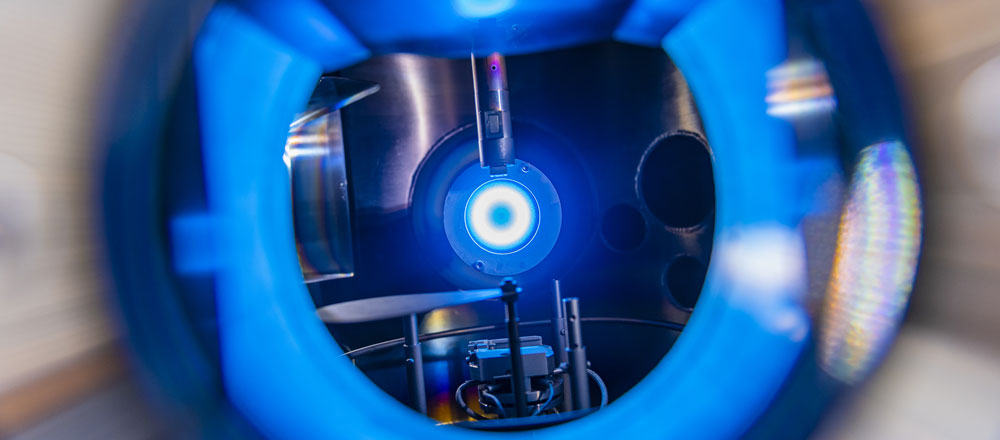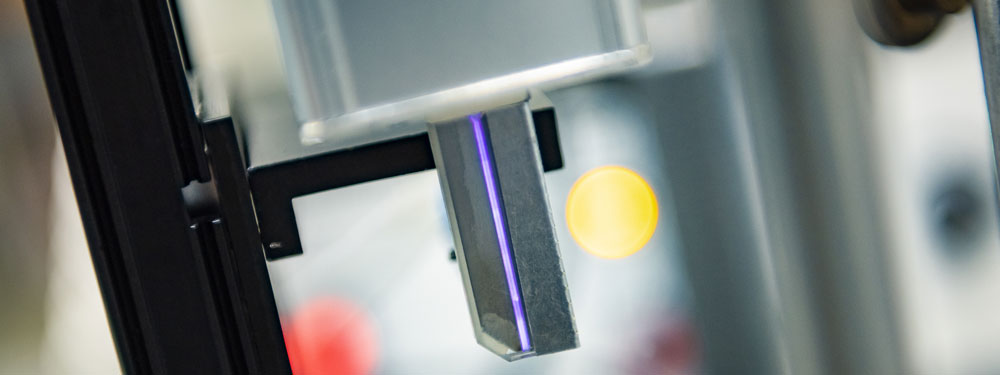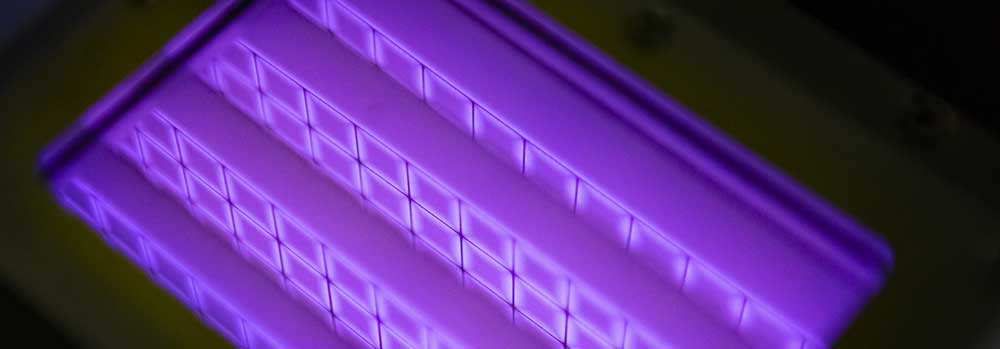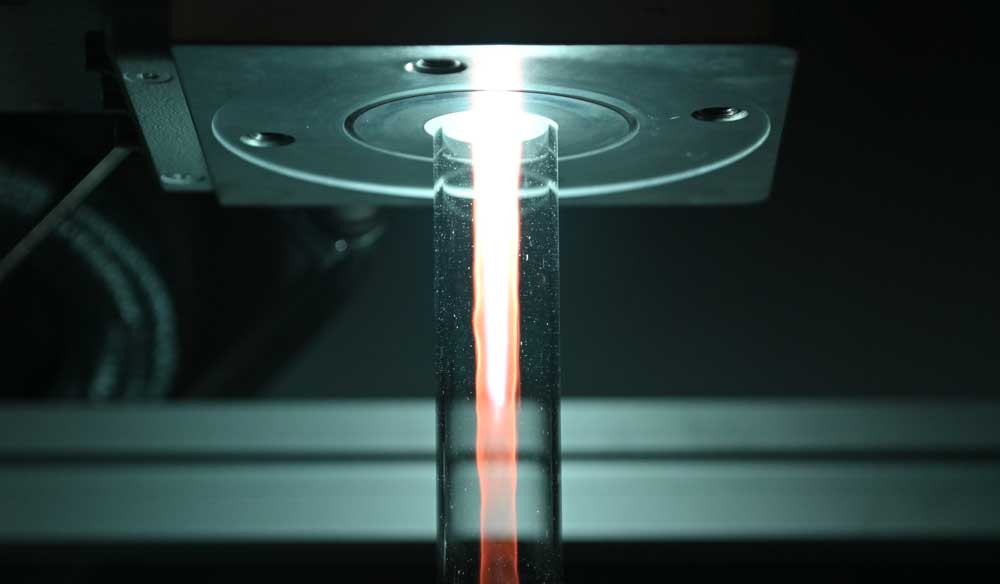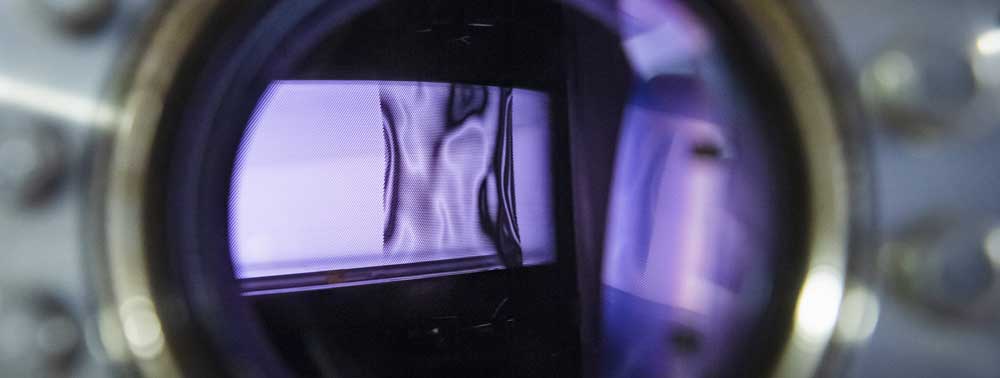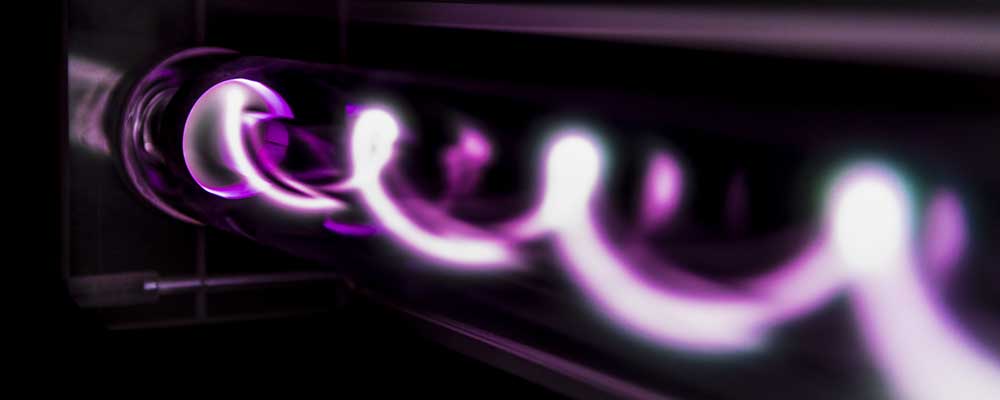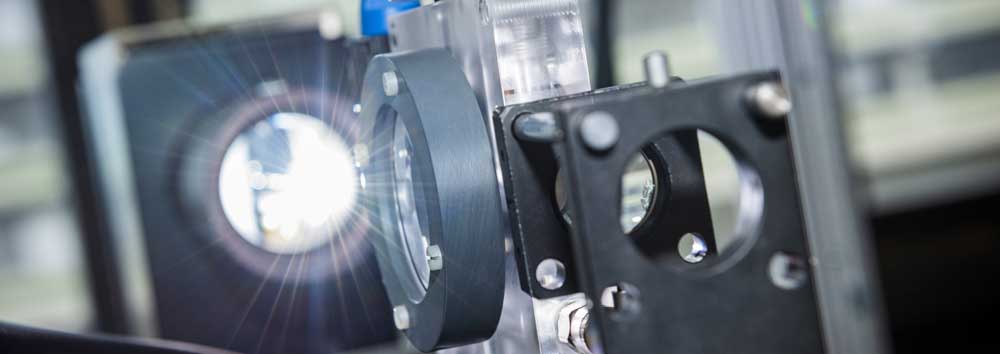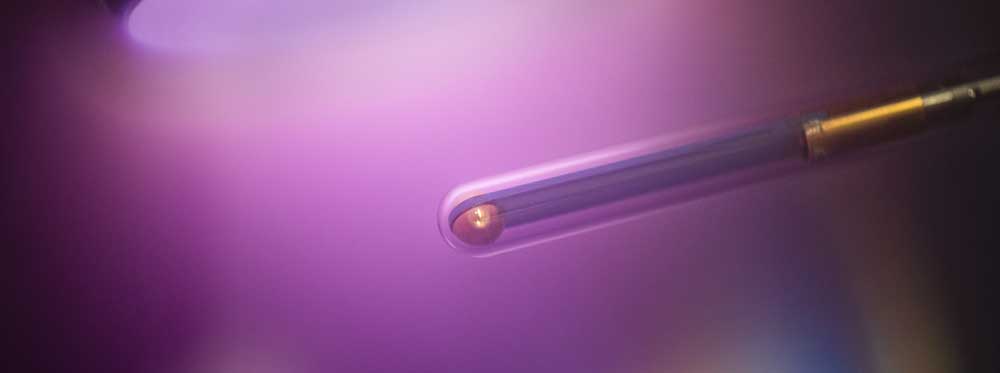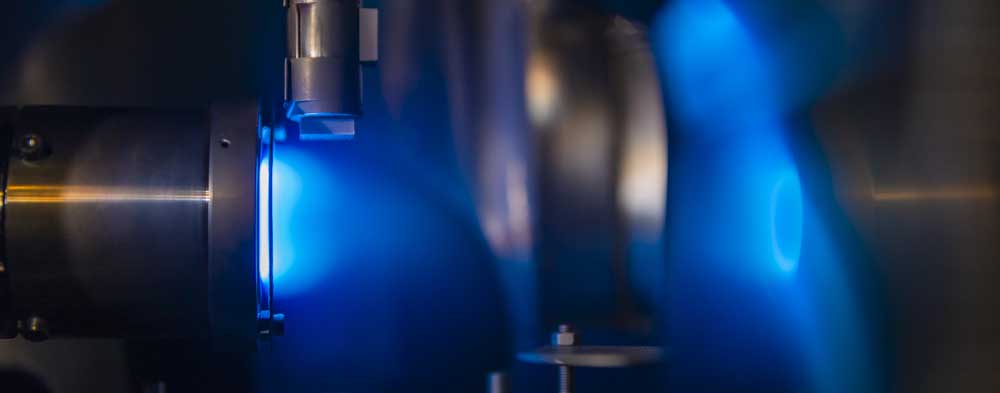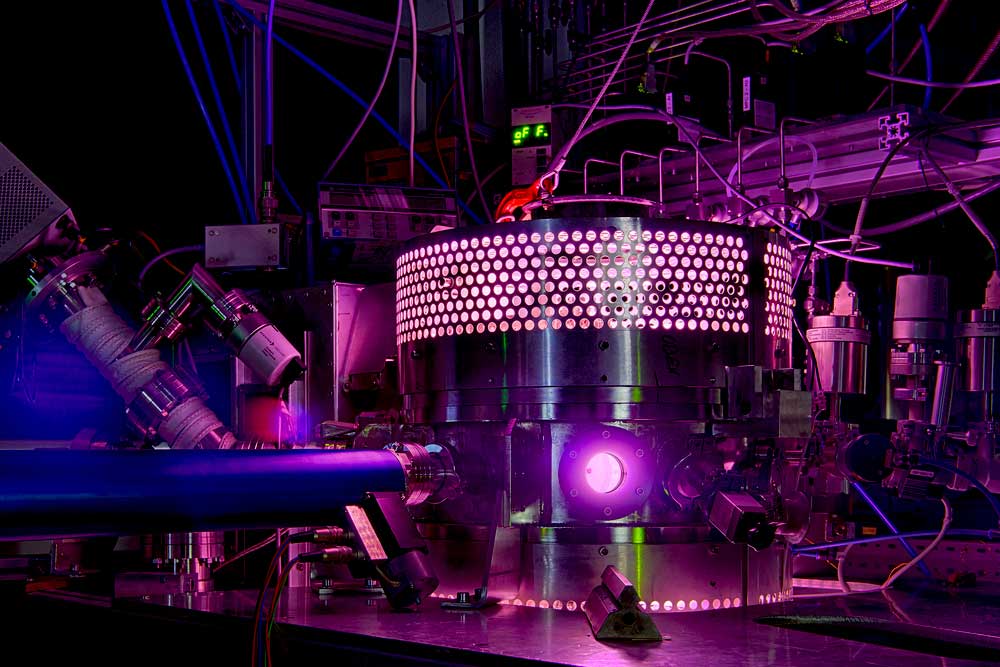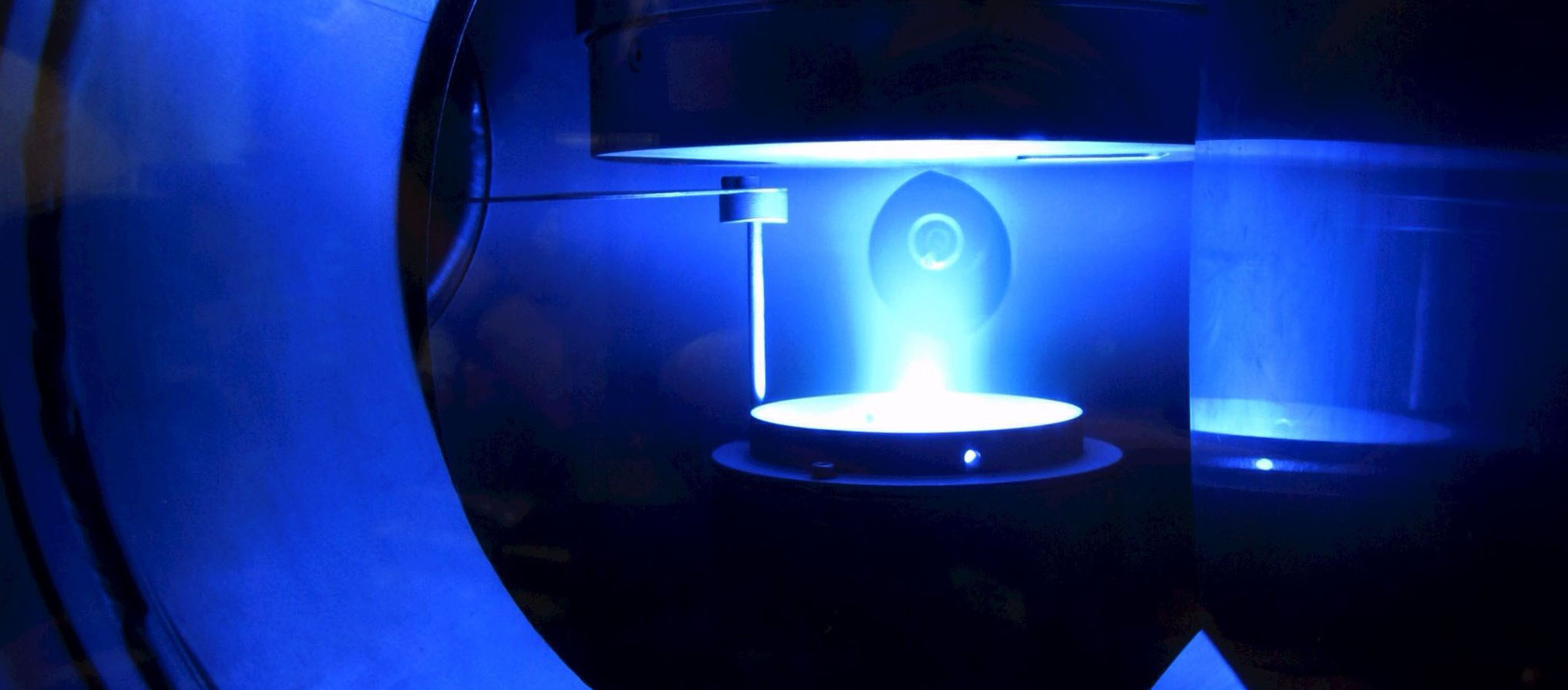A5 - sDBDSurface Streamer PropagationTime-resolved electron impact excitation rates showing |
- Details
Publication
Top 2 Ranking of the most read papers!
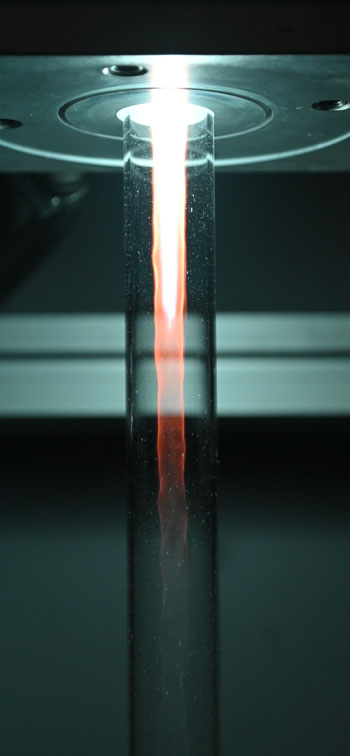 The paper entitled "Comparison of the performance of a microwave plasma torch and a gliding arc plasma for hydrogen production via methane pyrolysis" was recently published in the renowned journal "Plasma Processes and Polymers" and immediately achieved remarkable recognition and was downloaded the second most times in 2023. Simon Kreuznacht, Marc Böke and Achim von Keudell, among others, contributed to the paper. It deals with hydrogen production using plasma-heated methane pyrolysis in a microwave plasma torch (MPT) and a gliding arc plasmatron (GAP). The methane conversion, the product spectrum, the energy efficiency and the solid carbon particles produced were investigated.
The paper entitled "Comparison of the performance of a microwave plasma torch and a gliding arc plasma for hydrogen production via methane pyrolysis" was recently published in the renowned journal "Plasma Processes and Polymers" and immediately achieved remarkable recognition and was downloaded the second most times in 2023. Simon Kreuznacht, Marc Böke and Achim von Keudell, among others, contributed to the paper. It deals with hydrogen production using plasma-heated methane pyrolysis in a microwave plasma torch (MPT) and a gliding arc plasmatron (GAP). The methane conversion, the product spectrum, the energy efficiency and the solid carbon particles produced were investigated.
The second-place ranking of the most-read papers is clear proof of the relevance and influence of this research on the professional community.
Congratulations to the authors!
- Details
Award
Hall of Fame Prize for Uwe Czarnetzki
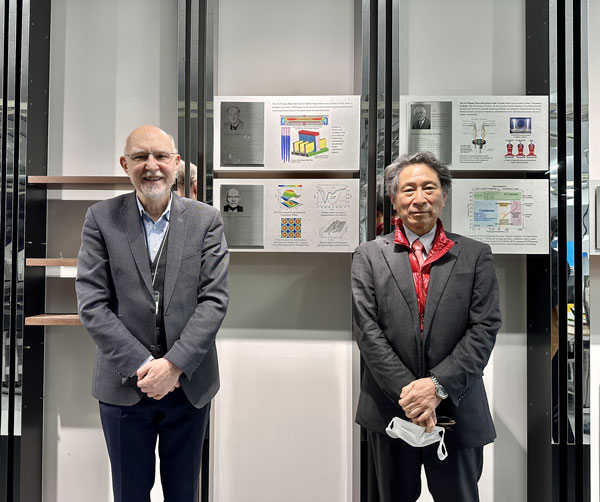 The 4th Plasma Materials Science Hall of Fame Prize was awarded to Prof. Uwe Czarnetzki, Ruhr University Bochum for the excellent achievements in many years of outstanding research on physical analysis of phenomena related to low-temperature plasma materials processing, and proposals for original plasma processing equipment, which are expected to lead to advanced future plasma processing techniques.
The 4th Plasma Materials Science Hall of Fame Prize was awarded to Prof. Uwe Czarnetzki, Ruhr University Bochum for the excellent achievements in many years of outstanding research on physical analysis of phenomena related to low-temperature plasma materials processing, and proposals for original plasma processing equipment, which are expected to lead to advanced future plasma processing techniques.
- Details
MGK Colloquium 2024
Renewed exchange between young researchers at the MGK Colloquium
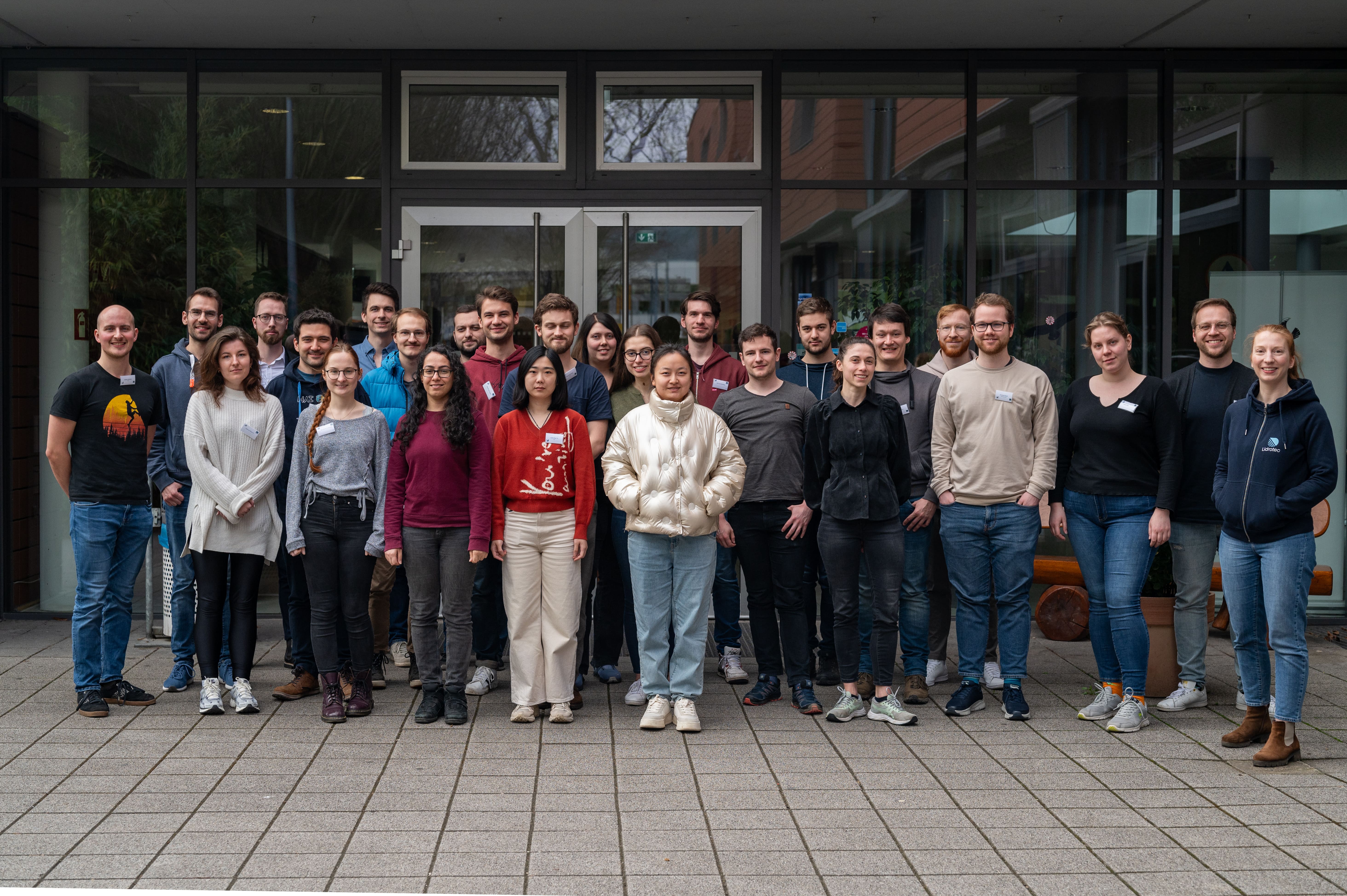 The MGK Colloquium 2024 of the CRC1316 took place from February 21 to 23 in Heidelberg. The colloquium is intended as a casual meeting where the young researchers of the CRC1316 can come together and exchange their knowledge.
The MGK Colloquium 2024 of the CRC1316 took place from February 21 to 23 in Heidelberg. The colloquium is intended as a casual meeting where the young researchers of the CRC1316 can come together and exchange their knowledge.
The meeting began with a guided tour through Heidelberg Castle. During the 90-minute tour, the participants learned a lot about the history of Heidelberg and the castle. On Thursday and Friday, the scientific part took place at the DJH Jugendherberge Heidelberg. Each student presented their progress in project presentations and two poster sessions.
An invited speaker from the "Laboratoire de Physique des Plasmas" in Palaiseau, France, gave a scientific lecture on CO2 conversion. In addition, speakers from large companies such as the Hartmann Group, ASML and Zeiss, as well as from a start-up company, Lidrotec, were invited to present their companies and explain how they got to their current positions after completing their PhD. Overall, the MGK Colloquium was a very successful conference and fostered exchange and communication between the young researchers of CRC1316.
- Details
DPG spring meeting in Greifswald
CRC 1316 members contribute to German Physics meeting
From February 26th to February 29th, the CRC 1316 joined the DPG spring conference, featuring four invited talks, numerous regular presentations, and engaging poster sessions, which took place in Greifswald. The event also witnessed active participation from our community, with one of our members being a part of the Advisory Board for Plasma Physics of the DPG.
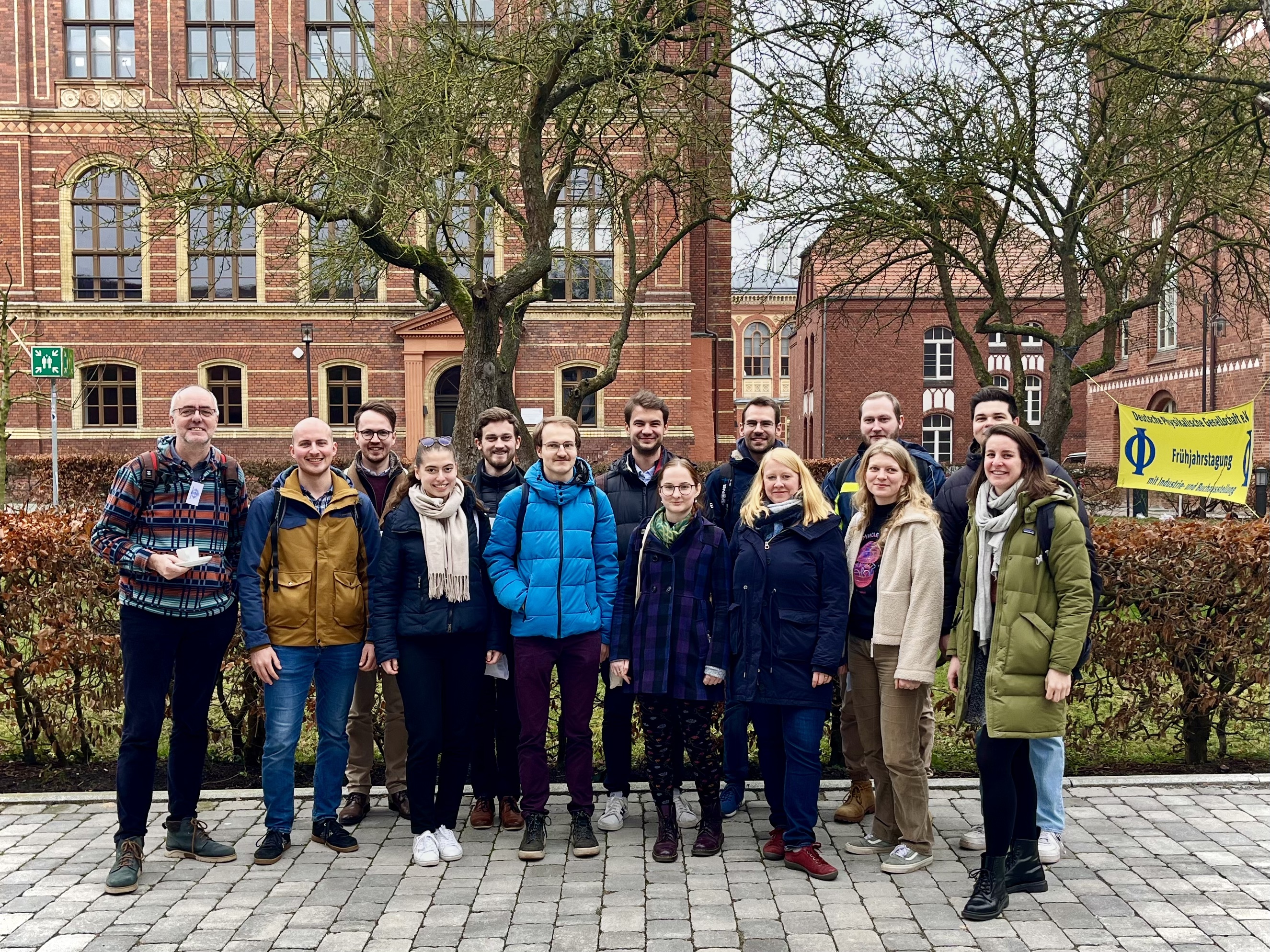
- Details
Meeting
PI meeting in Bochum
Two days of intensive collaboration and discussion marked the recent project meeting of the PIs of CRC 1316. Held at Beckmanns Hof in Bochum, the gathering on February 20 and February 21 showcased a commitment to shared goals and collective progress within the project. The meeting brought together PIs from the different groups. A significant portion of the two-day event was dedicated to in-depth discussions about ongoing projects, research findings, and the future trajectory of CRC 1316.

- Details
Young scientists
Research stay of Jan Kuhfeld in Japan
Jan Kuhfeld, an Early Career Researcher (ECR) affiliated with the Collaborative Research Center (CRC) 1316, has been chosen for a two-year research stay in Sapporo, Japan, through a fellowship granted by the Japan Society for Promotion of Science (JSPS). During his stay, he will conduct optical diagnostics in Professor Sasaki's laboratory at Hokkaido University to measure particle densities of reactive species in atmospheric pressure plasmas.
The application process involved a two-week visit to Sapporo in April 2023, where the research project was elaborated upon in detail.
- Details
Workshop
3rd Workshop on FAIR Data in Plasma Science
The 3rd Workshop on FAIR Data in Plasma Science will take place on May 13-14, 2024 at Kiel University, Kiel, Germany. There will be an option for virtual participation. The workshop is a continuation of successful events on research data management in the low-temperature plasma community in the past years. It aims to inform about current developments and to strengthen the exchange in the community on this topic. A further step in the series will be contributions to the needs and practical solutions related to the implementation of the FAIR data principles into practical research workflows. This covers both the field of laboratory experiments as well as modeling/simulations. A hands-on session will demonstrate how the electronic laboratory notebook system eLabFTW and the metadata creation tool Adamant can be set up and used in the field of plasma research.
Registration:
Please fill out the registration form to register for the workshop (https://www.plasma-mds.org/ws-fair-data-plasma-science-3.html). Registration is free of charge. Note that the available seats for on-site participation are limited.
Deadline for registration: April 29, 2024
Venue:
Institute of Experimental and Applied Physics
Kiel University
Conference room LS 19/214
Leibnizstraße 19
24118 Kiel
Contact:
The workshop is part of the activities of the working group Experimental Plasma Physics at Kiel University (CAU), the INF project of the CRC 1316 at the Ruhr-Universität Bochum (RUB) and the Department Plasma Modelling and Data Science at Leibniz Institute for Plasma Science and Technology (INP).
Experimental Plasma Physics
Institute of Experimental and Applied Physics
Kiel University, LS 19/104
Leibnizstraße 17
24118 Kiel
E-mail:
Web: https://www.physik.uni-kiel.de/de/institute/ag-benedikt
- Details
Special Issue
Plasma in Liquids for Materials
PIs from the CRC1316, together with experts in the field, organize a special issue on the topic of ''Plasma in Liquids for Materials" in the Journal of Applied Physics D.

Plasmas in Liquids for Materials is a rapidly developing field, where the intimate coupling between an intense plasma above and/or inside a liquid is coupled with the species chemistry of an electrolyte, including the solvent and species dissolved in that electrolyte or with solids next to the plasma. The materials synthesis and modification are most often driven by the liquid chemistry and/or the presence of large quantities of solvated electrons. Many of these processes are being explored application driven such as:
- formation of nanoparticles
- functionalizing surfaces
- micromachining surfaces
- polishing surfaces
The fundamental understanding from the plasma physics in these complex multiphase systems to the electrochemistry involving plasma-excited species, however, remains limited. this special issue aims at bridging this gap between fundamental plasma science and electrochemistry in these activated media with a focus on materials applications. we hope this collection will showcase advances in modelling and diagnostics of plasmas in liquids for materials applications, including electrochemistry, (electro)catalysis, nanoparticle formation and renewable energy applications in general.
Guest Editors
- Achim von Keudell, Ruhr University Bochum, Germany
- Mohan Sankaran, University of Illinois at Urbana Champaign, USA
- Thierry Belmonte, Université de Lorraine, France
- Albert K. Engstfeld, Ulm University, Germany
- Details
New Project Granted
B14 - Structure and dynamics of the solvated electron at electrified solid/liquid interfaces
A new project B14 with the title "The solvated Electron at the electrified solid/liquid interface: structure and dynamics from ab initio molecular dynamics simulations" for PI Marialore Sulpizi has been granted.
The aim of this project is the structural and dynamical characterization of the solvated electron in the presence of applied electric fields, in different environments, including liquid interfaces in contact with a conducting or insulating solid. The solvated electron is a species which is central to the field of plasma/liquid and plasma/solid/liquid interfaces as the primary reducing agent which is produced at plasma electrodes in contact with a liquid. Although the solvated electron has been subject of intensive experimental and theoretical investigation under equilibrium conditions, its properties in the presence of electric fields, are still quite unexplored. Atomistic molecular dynamics simulations including the electronic structure, to understand the impact of electric fields on the structure and dynamics of the solvated electron will be used.


